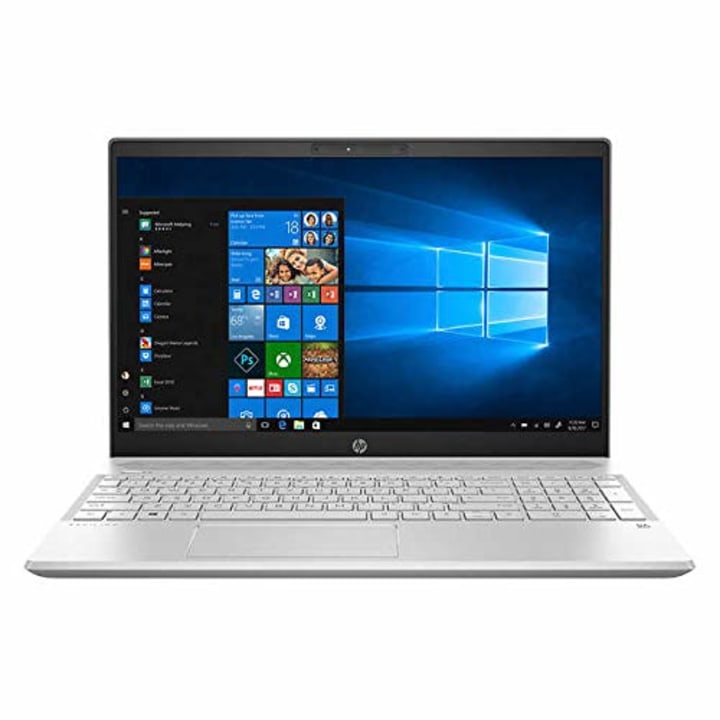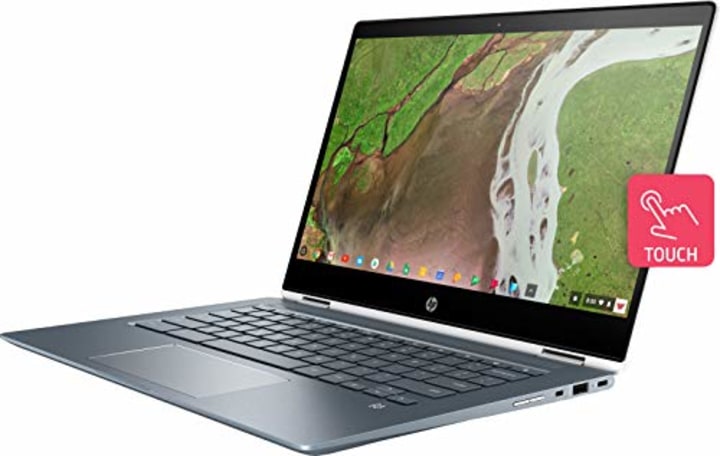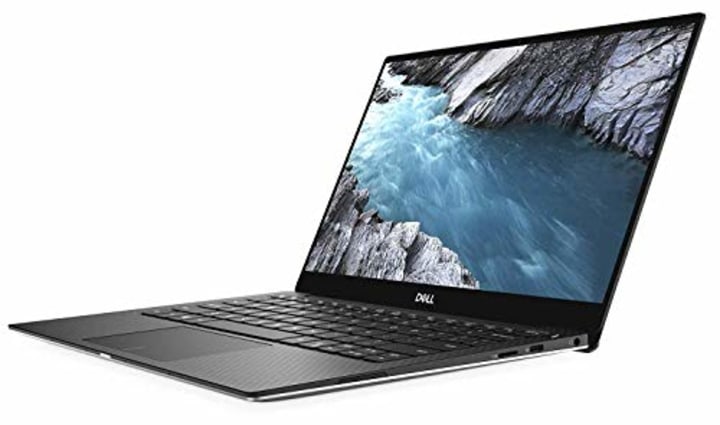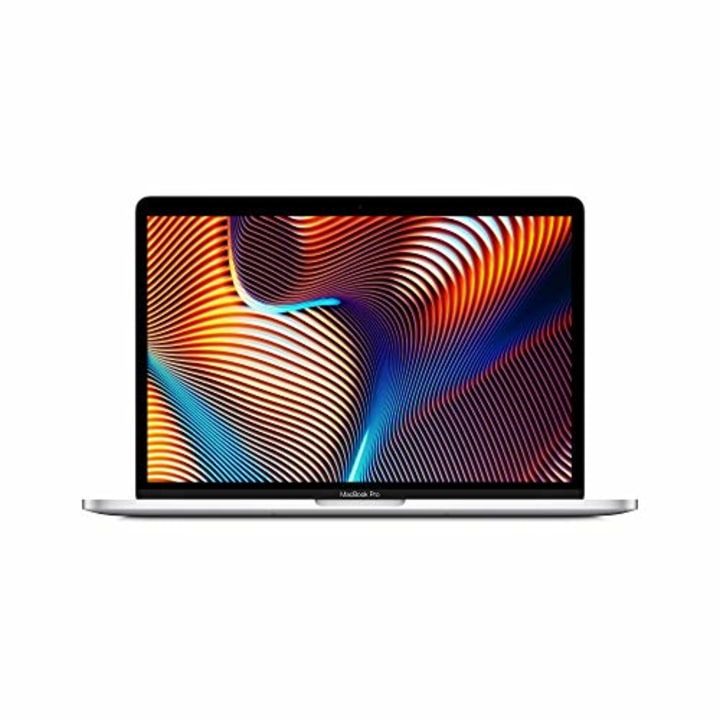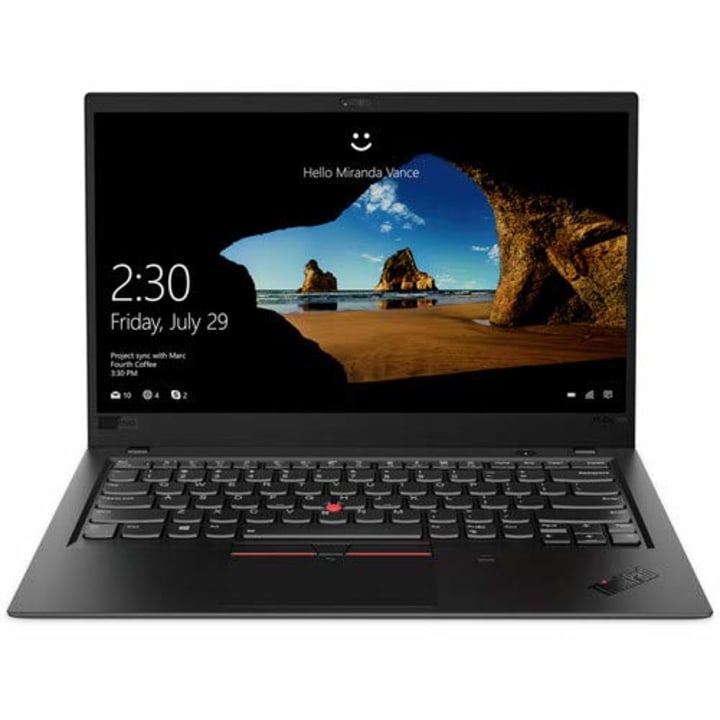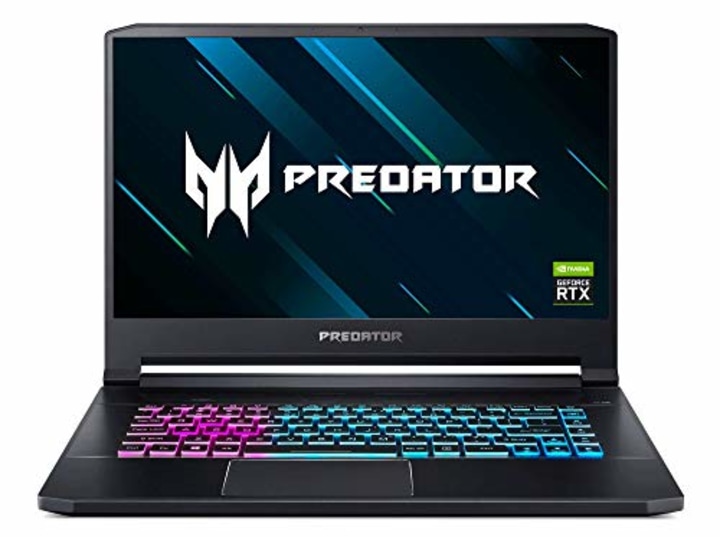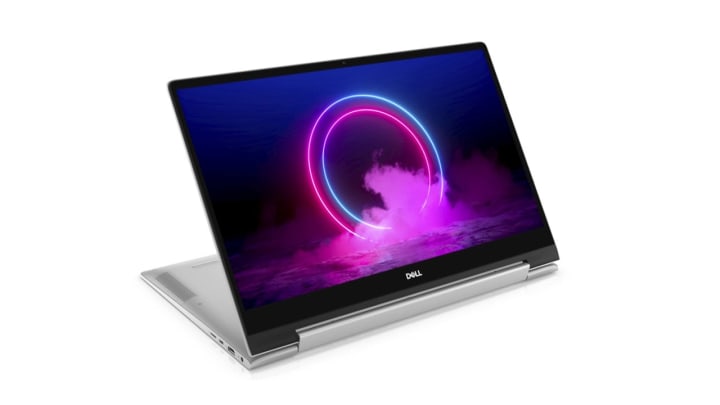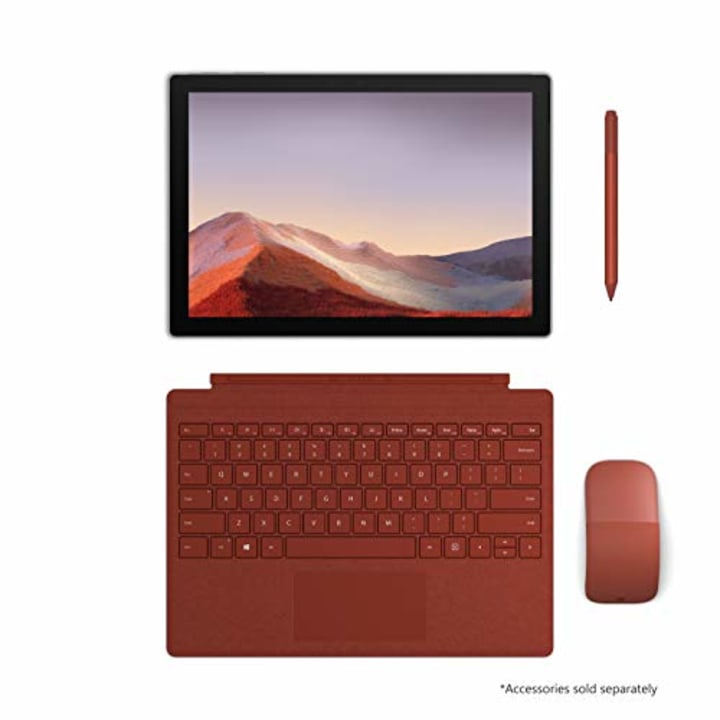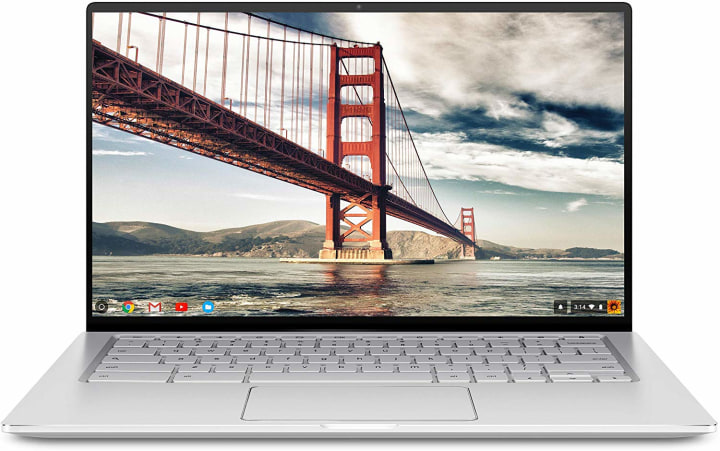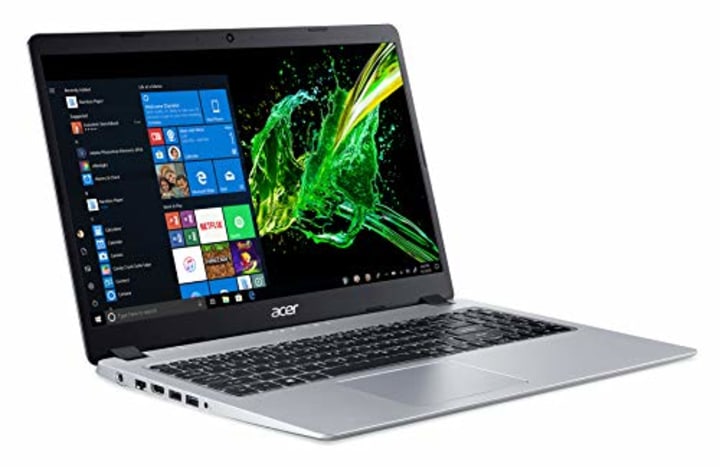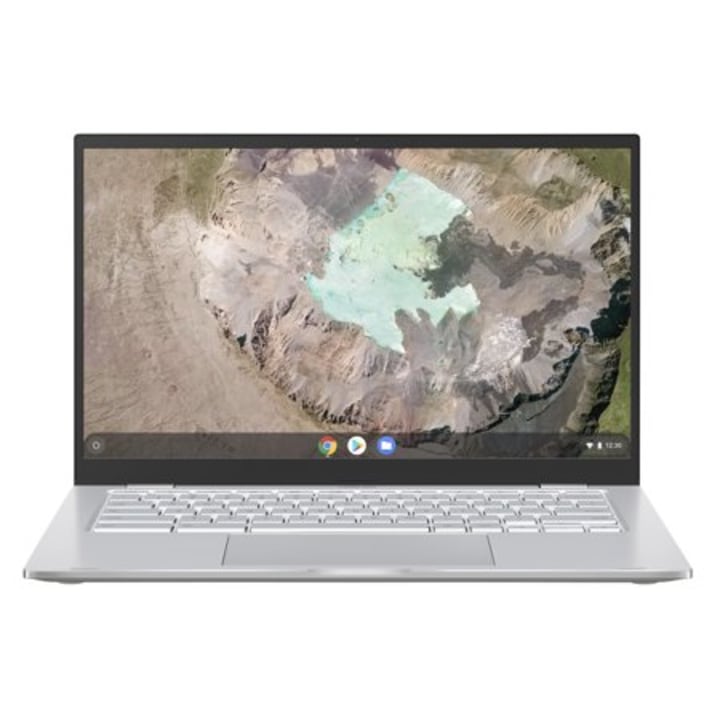This week, Apple released a new model of its iconic MacBook Air — which is currently on pre-order on Amazon. And while the laptop giant shut down all of its stores recently to contend with the ramifications of the coronavirus illness COVID-19, the new edition of its laptop won't go unnoticed by laptop enthusiasts — especially those waiting to upgrade their machines. These days, of course, many people are eyeing the latest laptops — you might have gotten an order to start working from home this week (as many others have). Some people already have work-issued laptops to bring back to their spaces — others might be figuring out which one to buy. Whatever the case, a laptop makes for a unique and significant remote working capability. If you're looking to buy a laptop right now, however, you'll come across a vast array of strong features and lots of jargon that could get overwhelming. Apple's new MacBook Air, for example, sports a 1.1GHz Dual-Core i3 processor and utilizes a 256GB SSD. If you're not familiar with these terms, you're in the right place.
First thing to know is that most reputable laptops are much, much better than they were just a few years ago (it’s laughable to think what laptops we once considered “portable”). I recently unearthed the IBM ThinkPad laptop I grew up playing games on, and I shudder to think what lugging that around would be like today. In general, today’s laptops are so much thinner, more powerful, and more affordable than the laptops of yore, and so there’s never been a better time to upgrade — especially, of course, if you have to.
In this article
- Which laptop operating system is right for you?
- Highly-rated laptops by operating systems
- How to choose laptop size?
- Leading 13- and 14-inch laptops
- Leading 15- and 17-inch laptops
- What is a 2-in-1 laptop?
- Laptop specs: How to understand the numbers
- Laptop CPU
- Laptop memory
- Laptop storage
- Screen resolution
I’ve been writing about tech for 10 years for publications like Lifehacker, PCMag, and the New York Times — and building my own computers for just as long. Some would call me “obsessive” in my need to optimize every component in the computers I buy, but don’t worry: With a few careful considerations, you should have no trouble picking the perfect laptop for you. With that, you might find yourself with a lot of choices to make, from the size and resolution of the laptop's screen to its battery life and even operating system. We go through the essentials below, providing examples of relevant laptops along the way.
Which laptop operating system is right for you?
Do you want a full-fledged operating system like Windows or macOS, or will a Chromebook get the job done just as well? These days, many of us check our email, manage our calendar, and write up documents on the web. You might be surprised at how far you’ll get with an affordable laptop using Chrome as its beating heart.
Chromebooks are essentially more affordable PCs that run on Google’s Chrome OS — essentially a web browser that has the ability to install Android apps like Photoshop Express and VLC, not to mention games like Minecraft.
If you have specialized software you use for work, want to play the latest games, or just want to stick with what’s familiar, Windows or macOS are still the old standbys most people use. They might just cost you a bit more, since they require more powerful hardware to run.
Highly-rated laptops powered by Chrome OS, MacOS, and Windows OS
1. New Apple MacBook Pro 16
Apple's laptops are powered by its own operating system, MacOS.
2. HP Pavilion 15z Touch
So-called Windows machines like the HP Pavilion rely on Microsoft's Windows OS.
3. HP Chromebook x360 14
Chromebooks use the eponymous ChromeOS.
How to choose the size of your laptop?
While all laptops are designed to be mobile, you’ll have to decide whether you want something smaller and more portable or bigger and more powerful. Most laptops are categorized by screen size, a measurement of a screen’s diagonal length — normally between 13 inches and 17 inches. Keep in mind that those measurements only apply to the screen itself, so there’s a bit of wiggle room in terms of the laptop’s actual size.
Leading laptops with 13- and 14-inch screens
The best-in-class Dell XPS 13 has very small bezels alongside the screen, so the laptop itself is noticeably smaller than other 13-inch laptops on the market. Broadly speaking, though, 13- and 14-inch laptops tend to be easier to carry around. This could be ideal for students, travelers, on-the-road professionals, and so on. Here are some highly-rated examples you might consider:
1. Dell XPS 13 Touchscreen Laptop
The flagship Dell laptop's 13-inch iteration is one of its most popular.
2. New MacBook Pro
Likewise, Apple's MacBook Pro is best for mobile use in its 13-inch iteration.
3. Lenovo Thinkpad X1 Carbon
Lenovo's X1 allows for the 14-inch screen, a unique size if you want more than the typical 13-inch provides but are weary of lugging around a 15-inch machine.
Leading laptops with 15- and 17-inch screens
The 15-inch and 17-inch laptops, in contrast, can pack in more hardware. This might be a priority for you, particularly if you plan on playing games or editing video. Remember, though, it’s about more than just screen size. The Acer Predator Triton 500, for example, is going to be thicker and heavier than other 15-inch competitors due to the top-tier gaming hardware it packs inside.
So be sure to look not just at that diagonal measurement, but the laptop’s actual dimensions and weight. It may be hard to envision the difference a couple millimeters or grams can make, but you can compare these numbers to your current laptop to give you a real-world point of comparison — you don’t want to end up lugging around something big and heavy because you didn’t look closely enough. Here are some highly-rated examples you might consider:
1. Acer Predator Triton 500
Unlike its competitors, the Triton 500 is slightly heavier since it packs in significant gaming hardware.
2. Dell Inspiron 17
The massive Dell model packs heavy graphics capabilities and allows you to transform it into a tablet — if you have the room of it.
What is a 2-in-1 laptop?
Simply put, some laptops are built with touchscreen capability so you can use them with more than their keyboard and trackpad — such laptops are typically known as 2-in-1 laptops.
1. HP Spectre x360
The HP Spectre x360, for example, sports a 360-degree hinge for tablet-esque usage on the couch or during a meeting,
2. Microsoft Surface Pro 7
The Surface Pro 7 is more of a tablet that can act as a Windows laptop with a detachable keyboard.
Laptop specs: How to understand the numbers, from RAM and SSD to eMMC and GHz
Once you know the general form factor that suits your needs best, it’s time to dig into the specs. Don’t get thrown off by all the mentions of Gigahertz (GHz) and gigabytes (GB) — most laptops fit pretty neatly into general categories of power. Unless you’re a specialist in a digital field or need extra power for a specific reason, the speed of your processor (in GHz) likely won’t make or break your experience, and it’s easy to see how much storage (in GB) you need by looking at the laptop, computer or phone you currently use.
Laptop CPU
The processor, or CPU, is the brain of your machine. It determines how your laptop handles the tasks you throw at it. For web browsing and writing, midrange CPU chips like Intel’s i3 and i5 processors are good enough. For heavier workloads requiring software like Photoshop or video editing programs, an i7 may be a better choice. Here are some examples of laptops with different CPUs:
1. Asus Chromebook Flip C434
On the lower end of CPU chip performance, the Chromebook Flip is a solid workhorse laptop at an affordable price — it wouldn't be the best machine for editing large video files.
2. Lenovo ThinkPad X395
On the elevated side of the spectrum is this model of the ThinkPad, which sports a more powerful processor.
Laptop memory: RAM
Memory, or RAM, helps your computer multitask — the more GBs it has, the more it can multitaks. These days, I’d advise getting at least 8GB of RAM, even if all you do is browse the web — web browsers have gotten pretty demanding and are often considered RAM-heavy. If you plan on opening a lot of browser tabs or performing the aforementioned heavy workloads, like video editing, 16GB is a worthy upgrade.
Laptop storage: Hard drive, eMMC and SSD
Your storage can come in the form of a hard drive, embedded multimedia controller (eMMC), or solid-state drive (SSD). It determines how much you can, well, store on your laptop. Things you might want to store include photos, videos, programs, documents, and so on. However, the speed of your hard drive can determine how quickly it boots up, how fast applications launch, and generally how snappy the computer feels. There are two main types of storage you’ll see:
- Hard drives are generally slower but high capacities are more affordable
- SSDs are very speedy but more costly per gigabyte
I highly recommend getting an SSD if you can — hard drives are just too slow. They generally work better as secondary storage in computers with multiple drives. Whichever type of storage you go with, you’ll also be choosing how much of it you want (or its capacity). If you have a lot of photos, music, and other files, you should get at least 256GB, if not more. If you aren’t sure how much you need, check how much you’re using on your current laptop. If you’re nearing the edge of your available hard drive space, double it for your next machine.
Note that Chromebooks are a different beast here since they assume you’ll be storing your data in the cloud, they often come with tiny those lesser-known eMMC drives. They’re faster than hard drives but slower than SSDs, and in Chromebooks, usually hold less than 100GB. As long as you don’t plan on storing tons of photos, movies, or other files on your Chromebook, that’s generally enough storage.
When it comes to storage, it’s important to keep in mind your future needs, not just your current ones. Some laptops, like the aforementioned XPS 13, allow you to open up the bottom case and pop in a bigger SSD down the line. Others, like Microsoft’s Surface Pro 7, have storage that’s soldered to the motherboard, so you’re stuck with what you buy (until you buy again). Here are some examples of laptops with different storage capacities:
1. Acer Aspire 5 Slim Laptop
The Aspire 5 sports a 128GB SSD.
2. ASUS Chromebook C425
This ASUS Chromebook comes with an eMMC flash storage drive.
Screen resolution
Finally, a laptop’s screen resolution consists of two numbers, like 1920x1080 (which is a resolution that’s known as 1080p) or 4096x2160 (also known as 4K). Those numbers sum the amount of pixels that make up the screen you’re looking at. More pixels make for more detailed images.
I recommend getting at least a 1080p screen, as lower resolutions give you less space to work with on the desktop. You can go higher than 1080p if you want the graphics to look really “sharp,” but it isn’t strictly necessary unless you’re working with high-resolution photos or videos.
HP Spectre x360
The HP Spectre x360, for example, sports a 360-degree hinge for tablet-esque usage on the couch or during a meeting,
Remember that a laptop’s quality is about more than just the guts inside. If you’re comparing two laptops that have similar specs but different prices, there’s most likely a reason one of them is more expensive.
Ultimately, build quality matters: If your laptop has a comfortable keyboard, an accurate trackpad that doesn’t jump the cursor around, and a smooth hinge that doesn’t break after a year, you’re going to have a much better experience. (That’s why I love Lenovo’s ThinkPad line so much — you just can’t beat the build quality.)
That doesn’t mean you have to spend thousands of dollars, of course. There are plenty of well-built affordable machines, like the all-aluminum Asus Chromebook Flip C434 — and if you prioritize a well-built machine, you’ll end up with something that lasts you many years, saving you money and hassle in the long run.
Catch up on Select's in-depth coverage of personal finance, tech and tools, wellness and more, and follow us on Facebook, Instagram and Twitter to stay up to date.





